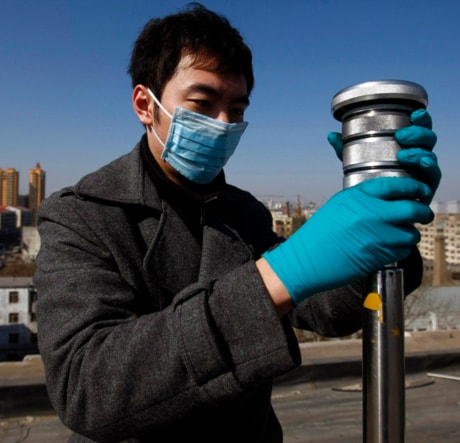TOKYO — Japan’s government admitted Tuesday that its safeguards were insufficient to protect a nuclear plant against the earthquake and tsunami that crippled the facility and caused it to spew radiation, and it vowed to overhaul safety standards.
The struggle to contain radiation at the Fukushima Dai-ichi complex has unfolded with near-constant missteps — the latest including two workers drenched with radioactive water despite wearing supposedly waterproof suits.
The March 11 tsunami that slammed into Japan’s northeast, wiping out towns and killing thousands of people, knocked out power and backup systems at the coastal nuclear power plant.
More than 11,000 bodies have been recovered, but officials say the final death toll is expected to exceed 18,000. Hundreds of thousands of people remain homeless, their homes and livelihoods destroyed. Damage could amount to $310 billion — the most expensive natural disaster on record.
The unfolding drama has drawn increasing criticism of the utility that owns the plant as well as scrutiny of Japan’s preparedness for nuclear crises.
“Our preparedness was not sufficient,” Chief Cabinet secretary Yukio Edano told reporters. “When the current crisis is over, we must examine the accident closely and thoroughly review” the safety standards.
An Associated Press investigation found that Tokyo Electric Power Co. officials had dismissed scientific evidence and geological history that indicated that a massive earthquake — and subsequent tsunami — was far more likely than they believed.
That left the complex with nowhere near enough protection against the tsunami.
The mission to stabilize the power plant has been fraught with setbacks, as emergency crews have dealt with fires, explosions and radiation scares in the frantic bid to prevent a complete meltdown.
The plant has been leaking radiation that has made its way into vegetables, raw milk and tap water as far away as Tokyo. Residents within 12 miles (20 kilometres) of the plant have been ordered to leave and some nations have banned the imports of food products from the Fukushima region.
Highly toxic plutonium was the latest contaminant found seeping into the soil outside the plant, TEPCO said Monday.
Safety officials said the amounts did not pose a risk to humans, but the finding supports suspicions that dangerously radioactive water is leaking from damaged nuclear fuel rods.
“The situation is very grave,” Edano said.
Workers succeeded last week in reconnecting some parts of the plant to the power grid. But as they pumped in water to cool the reactors and nuclear fuel, they discovered numerous pools of radioactive water, including in the basements of several buildings and in trenches outside.
The contaminated water has been emitting four times as much radiation as the government considers safe for workers. It must be pumped out before electricity can be restored and the regular cooling systems powered up.
That has left officials struggling with two crucial but contradictory efforts: pumping in water to keep the fuel rods cool and pumping out contaminated water.
Officials are hoping tanks at the complex will be able to hold the water, or that new tanks can be trucked in. On Tuesday, officials from the Nuclear Safety Commission said other possibilities include digging a storage pit for the contaminated water, recycling it back into the reactors or even pumping it to an offshore tanker.
The latest problem came Tuesday, when three workers trying to connect a pump outside the Unit 3 reactor were splashed by radioactive water that gushed from a pipe. Though they wore suits meant to be waterproof and protect against high levels of radiation, nuclear safety official Hidehiko Nishiyama said the men were soaked to their underwear with the contaminated water.
They quickly washed it off and were not injured, officials said.
Last week, two workers were hospitalized with burns after they were issued ankle-high protective boots to walk into highly radioactive knee-high water.
Nikkei, Japan’s top business newspaper, called it “outrageous” that TEPCO had been slow to release information about trenches outside the reactors filled with contaminated water.
On Monday, Edano blasted TEPCO for a major miscalculation that saw company officials announce a wildly high radiation level at the plant over the weekend, only to back away a half-day later, saying it had been an error. “This sort of mistake is not something that can be forgiven,” he said.
Prime Minister Naoto Kan reiterated in a speech to parliament that Japan was grappling with its worst problems since World War II.
“This quake, tsunami and the nuclear accident are the biggest crises for Japan” in decades, said Kan, dressed in one of the blue work jackets that have become ubiquitous among bureaucrats since the tsunami. He said the crises remained unpredictable, but added: “We will continue to handle it in a state of maximum alert.”
Kan has faced increasing criticism from opposition lawmakers over the handling of a nuclear disaster stretching into a third week.
“We cannot let you handle the crisis,” lawmaker Yosuke Isozaki said in parliament. “We cannot let you be in charge of Japan’s crisis management.”
